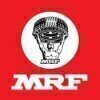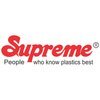Mechanical Maintenance Officer
10+ Mechanical Maintenance Officer Interview Questions and Answers

Asked in Innovassynth Technologies

Q. Types of equipments handled, range of ph, reactor permissible leakage for 15 min, oil used for toshniwal vacuum pumps and reactor gear box Temperature of cooling tower water Temperature of brine
Various equipments handled, permissible leakage, oil used for vacuum pumps and reactor gear box, cooling tower water temperature, brine temperature
Equipments handled include reactors, vacuum pumps, gear boxes
Permissible leakage for reactor is typically around 1-2 liters for 15 minutes
Toshniwal vacuum pumps use oil such as mineral oil or synthetic oil
Reactor gear box may use gear oil or lubricating oil
Cooling tower water temperature is usually maintained around 25-30 degrees C...read more

Asked in Innovassynth Technologies

Q. How is alignment done for pump coupling?
Alignment of pump coupling is done by using alignment tools and techniques to ensure proper alignment of the pump shaft and motor shaft.
Use alignment tools such as dial indicators, laser alignment tools, or straight edges.
Check and adjust the parallel and angular alignment between the pump shaft and motor shaft.
Ensure that the coupling hubs are properly aligned and tightened to the shafts.
Perform alignment checks after installation and periodically during maintenance.
Proper a...read more

Asked in Astec LifeSciences

Q. What is the difference between a boiler and a thermopack?
Boiler is used to generate steam while thermopack uses thermal energy to heat a fluid.
Boiler produces high-pressure steam while thermopack heats a fluid at low pressure.
Boiler is used in power plants and industrial processes while thermopack is used in small-scale industries.
Boiler requires more maintenance and has a higher risk of explosion compared to thermopack.
Boiler uses water as a working fluid while thermopack uses oil or other fluids.
Boiler has a higher efficiency in ...read more

Asked in Astec LifeSciences

Q. How much vacuum is possible, and why?
The maximum possible vacuum is determined by the pressure limit of the vacuum pump and the vapor pressure of the fluid being evacuated.
The maximum vacuum achievable is limited by the pressure limit of the vacuum pump.
The vapor pressure of the fluid being evacuated also limits the maximum vacuum.
Vacuum levels are typically measured in torr or millibar units.
The highest vacuum ever achieved in a laboratory is around 10^-13 torr.
Vacuum technology is used in a variety of industri...read more

Asked in Innovassynth Technologies

Q. What is the permissible pressure drop for the reactor?
The permissible drop for a reactor refers to the allowable decrease in reactor coolant flow or temperature during operation.
Permissible drop is typically defined by safety regulations and operational guidelines.
For example, in pressurized water reactors, a drop of 10-15% in coolant flow may be acceptable under certain conditions.
Exceeding permissible drop can lead to overheating and potential safety hazards.
Monitoring systems are in place to detect and respond to significant ...read more

Asked in Anmol Industries

Q. What do you mean by 5S?
5S is a workplace organization method that improves efficiency and safety through five key principles.
Sort: Remove unnecessary items from the workspace. Example: Discard old tools that are no longer used.
Set in order: Organize tools and materials for easy access. Example: Label shelves and use shadow boards for tools.
Shine: Clean the workspace regularly to maintain standards. Example: Schedule daily cleaning routines.
Standardize: Create standardized work procedures and checkl...read more
Mechanical Maintenance Officer Jobs



Asked in Dairy Classic Ice Creams

Q. What is material manufacturing?
Material manufacturing is the process of creating products from raw materials through various techniques and processes.
Material manufacturing involves transforming raw materials into finished products
It includes processes such as casting, molding, machining, and welding
Materials can be metals, plastics, ceramics, or composites
Quality control is crucial in material manufacturing to ensure product reliability
Examples include manufacturing of car parts, electronic components, an...read more

Asked in Innovassynth Technologies

Q. What is the pH range?
pH range measures the acidity or alkalinity of a solution, typically from 0 (acidic) to 14 (alkaline).
pH 0-6: Acidic solutions (e.g., hydrochloric acid).
pH 7: Neutral solutions (e.g., pure water).
pH 8-14: Alkaline solutions (e.g., sodium hydroxide).
pH affects chemical reactions, biological processes, and material properties.
Share interview questions and help millions of jobseekers 🌟


Asked in Concept Pharmaceuticals

Q. Are you ready to work?
Yes, I am ready to work and committed to ensuring optimal mechanical performance and maintenance.
I have hands-on experience with various mechanical systems, ensuring they operate efficiently.
I am familiar with preventive maintenance schedules, which help in reducing downtime.
For example, I successfully implemented a maintenance plan that reduced equipment failure by 20%.
I am adaptable and can work in different environments, whether it's on-site or in a workshop.

Asked in Innovassynth Technologies

Q. What types of reactors have you worked with?
I have encountered various types of reactors, including nuclear, chemical, and biological reactors, each with unique operational principles.
Nuclear reactors: Used for power generation and research, e.g., pressurized water reactors (PWR).
Chemical reactors: Employed in the production of chemicals, e.g., batch reactors for pharmaceuticals.
Biological reactors: Utilized in wastewater treatment, e.g., activated sludge systems.

Asked in Innovassynth Technologies

Q. What is the relationship between psi and kg/cm²?
Psi and kg/cm² are both units of pressure; 1 psi equals 0.070307 kg/cm².
1 psi is approximately equal to 0.070307 kg/cm².
To convert psi to kg/cm², multiply by 0.070307.
For example, 30 psi is about 2.109 kg/cm² (30 * 0.070307).
Conversely, to convert kg/cm² to psi, multiply by 14.223.
For instance, 1 kg/cm² equals approximately 14.223 psi.

Asked in D&H Sécheron Electrodes

Q. Types of welding
Welding is a fabrication process that joins materials, typically metals, through heat and pressure.
Arc Welding: Uses an electric arc to melt and join metals. Example: Shielded Metal Arc Welding (SMAW).
MIG Welding: Metal Inert Gas welding, uses a continuous wire feed. Example: Gas Metal Arc Welding (GMAW).
TIG Welding: Tungsten Inert Gas welding, uses a non-consumable tungsten electrode. Example: Gas Tungsten Arc Welding (GTAW).
Oxy-Fuel Welding: Combines oxygen and fuel gas to ...read more
Interview Questions of Similar Designations
Interview Experiences of Popular Companies








Reviews
Interviews
Salaries
Users

















